Results 2,701 to 2,710 of 12096
Thread: Anandtech News
-
03-01-13, 03:30 PM #2701
Anandtech: Seagate to Discontinue 7200rpm 2.5" Drives Later This Year
Earlier today X-bit Labs reported that Seagate will stop the production of their 7200RPM 2.5" drives by the end of this year and I just got a confirmation from Seagate that this is really the case. Seagate currently offers four 7200RPM 2.5" lineups: Momentus 7200.4, 7200.2, Momentus Thin 7200, and Momentus XT. The latter is Seagate's hybrid drive, which couples the spinning platters with 8GB of SLC NAND for caching purposes.
The move makes sense when looking at the market's state. 7200RPM mobile hard drives have always been a premium product and are mostly found in high-end laptops or built-to-order configurations. Due to the decline in SSD prices over the last few years, the market for faster hard drives has quickly faded away because users seeking for performance have opted for SSDs instead of 7200RPM hard drives. While 7200RPM 2.5" hard drives are still significantly cheaper per GB than SSDs, even a small (32-128GB) SSD will provide better overall performance when used as an OS and applications drive, and high-end laptops can often be configured with dual-drives to overcome the capacity issue (especially with mSATA around or by removing the optical drive).
As an intermediate solution, quite a few laptop OEMs also offer at least some sort of flash based storage in their higher-end products nowadays, usually in the form of a small mSATA caching SSD. 5400RPM hard drives are fast enough when the most frequently stored data is stored in an SSD and draw less power so they are more optimal as secondary storage.  
Seagate won't depart the performance hard drive market as they will focus on hybrid drives (SSHDs). Ultimately I believe this is a better choice because we still haven't really seen a great hybrid drive and the market for hybrid drives is definitely bigger and more future-proof than 7200RPM hard drives. While the first and second generation Momentus XTs have been a good start, 4-8GB of NAND isn't enough to provide the real SSD experience. There is hope that with the discontinuation of 7200RPM mobile hard drives, Seagate will put more effort into the Momentus XT. Personally I would like to see multiple SKUs with varying amounts of NAND to cater to the mainstream market as well as the high-end market where users are expecting more SSD-like performance.
Seagate doesn't have a consumer SSD lineup, so the Momentus XT is a crucial product for Seagate in order to stay in the high-end, higher-profit consumer storage market. The question is whether they will be able to make a hybrid drive a more attractive option than a caching mSATA/M.2 SSD with a conventional hard drive. Given the current pricing and the upgrade path offered by mSATA/M.2, plus the fact that 20-32GB caching SSDs with Intel's Smart Response Technology clearly outperform the current Momentus XT offerings, Seagate has their work cut out for them. In another five years, short of a new explosion in storage intensive files, we will likely reach the point where everything becomes pure SSD because the cost and performance will be better than any conventional or hybrid solutions.

More...
-
03-04-13, 04:30 AM #2702
Anandtech: QNAP Introduces Atom-based 12-bay TS-1269U-RP Rackmount NAS
QNAP's flagship NAS lineup, the TS-ECx79U-RP, checks all the boxes for a high performance enterprise NAS in a rackmount form factor for high end SMBs. These include quad GbE ports (with a free PCIe slot to add a 10 GbE interface), a Xeon processor to handle the software RAID, volume encryption acceleration with AES-NI, dual redundant power supplies and so on. QNAP realized that there was a market demand for a cheaper version with the same form factor and a few similar features, but without the extreme performance provided by the Xeon-based platform. Towards this, QNAP recently introduced the TS-1269U-RP rackmount NAS for the SMB market.
The TS-1269U-RP provides 12 hot-swappable HDD bays in a 2U form factor and retains the dual redundant hot-swappable power supply feature from the flagship lineup. It is based on a dual-core Intel Atom D2700 series processor running at 2.13 GHz. The unit has 2 GB of DRAM which can be expanded by the user to 3 GB. Both 2.5" and 3.5" drives are supported and the unit comes with two GbE ports. Unlike the TS-ECx79U-RP flagship series, there are no PCIe slots available for expanding the network interface list. There are two USB 3.0, two eSATA and four USB 2.0 ports along with an HDMI output port. QNAP claims power consumption between 65 and 85W depending on the load on the NAS. With port trunking, QNAP was able to obtain up to 222 MB/sec read and 223 MB/sec write performance, well in line with what is obtained using other Atom-based NAS units with two trunked network links.
In terms of OS and software features, QNAP's embedded Linux firmware provides for secure cross platform file sharing, an iSCSI / IP-SAN storage combo and a number of other business applications.
It also integrates a number of backup applications. Virtualization support is also available, with the unit being Windows Server 2012 certified and also coming with VMware Ready and Citrix Ready certifications.
Surveillance Station Pro can also bring together various IP cameras for a video surveillance system. QNAP also provides the Qfile, Qmanager and Qmobile iOS / Android apps for accessing and monitoring the NAS on the go.

More...
-
03-04-13, 09:30 AM #2703
Anandtech: Westmere-EP to Sandy Bridge-EP: The Scientist Potential Upgrade
Earlier this year I wrote a review of a dual processor Sandy Bridge-EP system from the point of view of the non-CS trained coder in a research group, and whether the limited knowledge of advanced processor commands (beyond basic C++ with OpenMP) was a hindrance to dual processor systems on some simple grid solvers/Brownian motion simulation.  As part of the feedback to the review, I was asked by several readers using the older Westmere-EP platform doing similar types of calculations if it was worth pushing their research budget for a move from Westmere-EP to high-end Sandy Bridge-E, and whether the jump in cores/IPC would cost effective in those simulation scenarios.  Thankfully Gigabyte was on hand to supply their GA-7TESM DP socket 1366 Xeon board and a pair of X5690s in order to run the comparison.  Read on for benchmark results!
 
  
More...
-
03-04-13, 11:30 AM #2704
Anandtech: ioSafe N2: A Disaster-Resistant Synology DS213
The emergence of the digital economy has brought to fore the importance of safeguarding electronic data. We have discussed the 3-2-1 data backup strategy before in the piece where we covered ioSafe's Indiegogo campaign. The strategy involves keeping three copies of all essential data, spread over at least two different devices with at least one of them being off-site or disaster-resistant in some way. It is almost impossible to keep a copy of large frequently updated data sets current in an off-site data backup strategy. This is where companies like ioSafe come in.
We had reviewed ioSafe's SoloPRO, a disaster-resistant external hard drive last year and it is now the turn of the ioSafe N2 network attached storage unit to be put under the microscope. The ioSafe N2 is a Synology DS213 in a disaster-resistant chassis. Read on for a closer look at the hardware and the performance of the unit.
 

More...
-
03-05-13, 04:00 AM #2705
Anandtech: Securifi's Almond+ 802.11ac Touchscreen Wi-Fi Router Integrates ZigBee and
It isn't often that we write about products seeking crowd funding. We had written about ioSafe's Indiegogo campaign for the N2 NAS back in September 2012, and the review of that product went out yesterday. Unless a product has already been demonstrated in its full working state and is guaranteed to ship, we are hesitant to provide dedicated publicity and hype to ideas and concepts that may never reach the consumer.
We have also recently ramped up our coverage of home automation technologies. In one of the initial pieces, we were bullish on the upcoming 802.11ah Wi-Fi standard for the Internet of Things revolution happening right now. 802.11ah standardization and devices are a good 2 to 3 years away, and in the meanwhile, Z-Wave and ZigBee will extend their reach further into the home.
One of the primary roadblocks to adoption of home automation technologies is the need for consumers to invest in a dedicated controller (very much similar to investing in a wireless router for Wi-Fi, but only much costlier). Securifi, a consumer networking startup, aims to solve this problem by launching a Wi-Fi router with both Z-Wave and ZigBee radios. Securifi is no stranger to the router world. They launched the Almond touchscreen router last year and it has proved to be very popular on Amazon.
Securifi's Almond+ boasts of 802.11ac speeds with two spatial streams (867 Mbps of theoretical throughput). It will also have concurrent dual band 802.11n support (again, two spatial streams for 300 Mbps of theoretical throughput). The WAN port and four LAN ports are all gigabit. The unit is based on the Realtek 802.11ac reference platform (with the RTL8812 802.11ac + an radio). For Z-Wave, Sigma Designs ZM3102 is being used. The prototypes demonstrated at CES 2013 had Atmel ZigBee ICs, but Securifi expects to use ICs from Silicon Labs for this radio in production units. The beauty of the design is that all three radios are under the control of a single SoC running at 620 MHz with 128 MB of RAM.
Home automation components sold by companies like Comcast, Verizon and ADT bring with them monthly subscription fees. For tech-savvy folks, this is an irritant, as they want more control of the home automation services from outside without paying monthly fees. The Almond+ aims to cater to those types of users too by releasing the SDK for the router to the public. This should allow the open-source community as well as device vendors to quickly add support for various ZigBee / Z-Wave sensors in the Almond+. Securifi recently indicated that control of the Philips Hue using the Almond+ is already in the works.
A touchscreen on a router such as the Almond didn't get us excited. However, when bundled with a controller for home automation sensors, it begins to make a lot of sense. For $99, the set of features seems like a steal (given that  802.11ac routers have struggled to break the sub-$100 barrier). The Almond+ project has already reached its funding goals on Kickstarter. Our only minor quibble is that Securifi could have upped the price a bit in exchange for a larger touchscreen (2.8in touchscreens are definitely not $200). In any case, we are really excited about the Almond+ and can't wait to get it in our hands for evaluation in real-world scenarios. Availability is slated for mid-Q3 2013. Economical devices like these are encouraging signs for the IoT (Internet of Things) ecosystem.

More...
-
03-05-13, 08:30 AM #2706
Anandtech: NVIDIA Launches Quadro K4000, K2000, K2000D, & K600
Back in August of 2012 NVIDIA announced their first Kepler based Quadro part, the Quadro K5000. Based on NVIDIA’s at the time leading GK104 GPU, K5000 was the customary generational update to the workstation-focused Quadro family, bringing to the Quadro family Kepler generation features such as support for 4 monitors, NVIDIA’s NVENC video encoder, and of course greater rendering performance. However since its launch the K5000 has stood alone as the only Kepler based desktop Quadro card, with the older Fermi based products filling out the rest of the Quadro family. Today that will finally be changing as NVIDIA fleshes out the rest of the Quadro lineup with new Kepler based parts.
Altogether NVIDIA will be launching 4 new Quadro cards, intending to fill out the lower performance, higher volume market segments below the $2,250 K5000. These cards will be the K4000, the K2000, the K2000D, and the K600.
Just as how the K5000 was the direct successor of the Fermi based Quadro 5000, these new cards are the direct successors of their respective Fermi counterparts, and will be occupying roughly the same market segments. At $1,269 will be the GK106 based K4000, which combines 768 CUDA cores with 3GB of RAM. Below that is the K2000 at $599, a GK107 based part packing 384 CUDA cores and 2GB of RAM. K2000 will come in two variants, a standard variant with 2 DisplayPorts and 1 DL-DVI port, and the K2000D which flips that for 2 DL-DVI ports and 1 mini-DisplayPort. Finally at $199 is a further cut down GK107 part, the K600, NVIDIA’s entry-level Kepler Quadro card featuring 192 CUDA cores, 1GB of RAM, and 1 DisplayPort along with 1 DL-DVI port.  Quadro K5000 Quadro K4000 Quadro K2000 Quadro K600 Stream Processors 1536 768 384 192 Texture Units 128 64 32 16 ROPs 32 24 16 16 Core Clock ~700MHz ~800MHz ~950MHz ~875MHz Memory Clock 5.4GHz GDDR5 5.6GHz GDDR5 4GHz GDDR5 1.8GHz DDR3? Memory Bus Width 256-bit 192-bit 128-bit 128-bit? Frame Buffer 4GB 3GB 2GB 1GB FP64 1/24 FP32 1/24 FP32 1/24 FP32 1/24 FP32 Max Power 122W 80W 51W 41W GPU GK104 GK106 GK107 GK107 Architecture Kepler Kepler Kepler Kepler Transistor Count 3.5B 2.54B 1.3B 1.3B Manufacturing Process TSMC 28nm TSMC 28nm TSMC 28nm TSMC 28nm MSRP $2,249 $1,269 $599 $199
Similar to how the Fermi Quadro cards were handled, the Kepler Quadro cards are essentially stratified based on a mix of features and performance. Partial ECC support for example will not make it down to any of these new cards, while NVIDIA’s GPUDirect for Video technology is being made available on the K4000 and above, but not the K2000 or K600. Meanwhile relative to their Fermi predecessors performance has increased across the board, with the specific gains varying with the SKU and the resource needs of any given application.
Of course the big draw for the Kepler Quadro family is Kepler’s improved display controller, which adds support for DisplayPort 1.2, support for 4K displays, and at the same time doubles the number of displays that can be driven from 2 on Fermi to 4 on most Kepler cards. Like the K5000, the K4000 and K2000 will be able to drive up to 4 displays, but in an important difference, owing to their smaller profiles these cards will not feature 4 display outputs. Rather in a first for NVIDIA, they will be relying in DisplayPort 1.2’s MST/daisy-chaining functionality to drive 2+ monitors off a single DP output.
Similarly, with the increased number of supported displays per card NVIDIA has upgraded their Mosaic software to match Kepler’s capabilities, increasing the number of displays that can be part of a mosaic.  Mosaic now supports 16 displays spread over 4 video cards, for 4 displays per video card.
Finally, as with the Fermi generation of Quadro cards, the Kepler generation of Quadro cards will be top-to-bottom Maximus enabled for blended graphics/compute tasks. This means any Kepler Quadro card can be paired with a Tesla K20 to offload compute onto the K20 in supported applications, freeing up the Quadro card for graphical tasks while boosting compute performance. Given the $3000+ price tag on a K20 we don’t expect to see very many environments using Maximus with the K600, but from what we’ve seen in the past, Quadro 2000 series cards have ended up being Maximus pairings for use in tasks where a Quadro card is being used to visualize Tesla results.
On a final note, unlike the K5000 this will be a hard launch, so K4000, K2000, and K600 cards will be available starting today. This goes for both retail add-in card sales and for pre-built OEM systems, with OEMs shipping systems equipped with NVIDIA’s latest Quadro cards as soon as today.
Gallery: NVIDIA Quadro K4000



Gallery: NVIDIA Quadro K2000



Gallery: NVIDIA Quadro K600




More...
-
03-05-13, 09:00 AM #2707
Anandtech: Seagate Announces New Laptop and Desktop SSHDs (Solid State Hybrid Drives)
A few days ago we reported that Seagate would stop selling 7200 RPM 2.5” hard drives by the end of the year. Now we know why. Seagate will continue to offer 5400 RPM 2.5” drives, but if you want more performance without diving into the performance/capacity tradeoffs of an SSD Seagate will offer you its 3rd generation solid state hybrid drive (SSHD).
Once sold under the Momentus XT brand, the 3rd gen hybrid drives will simply be sold under the SSHD moniker. As Seagate alluded to many times in the past, we’ll also be getting a 3.5” hybrid drive as well. The two families will simply be called the Seagate Laptop SSHD and Seagate Desktop SSHD.
While both families will have many members, at launch we’ll see the following:
All of the drives use a standard SATA interface, and all of them feature 8GB of MLC NAND (with a small portion of the NAND set aside for use in SLC mode, similar to SanDisk’s nCache). This is a disappointingly small amount of NAND, however Seagate hinted at future, higher performance versions shipping with somewhere around 32GB of NAND. As we found in our investigation of Apple’s Fusion Drive, the ideal number is likely somewhere in the 128GB - 256GB range but that puts you in a very different price class.Seagate SSHD Lineup 1H 2013   Capacity Form Factor Platters Speed NAND Price Seagate Laptop SSHD 500GB 2.5" 7mm 1 5400 RPM 8GB MLC $79 Seagate Laptop SSHD 1TB 2.5" 9.5mm 2 5400 RPM 8GB MLC $99 Seagate Desktop SSHD 1TB 3.5" 1 7200 RPM 8GB MLC $99 Seagate Desktop SSHD 2TB 3.5" 2 7200 RPM 8GB MLC $149
The benefit of using only 8GB of NAND is that Seagate is able to keep prices very low. Both Laptop and Desktop SSHDs are expected to carry around a $15 - $20 price premium over competing 7200RPM alternatives.
The NAND mostly acts as a read cache, although this time around Seagate claims it will be able to cache some writes. Seagate is understandably sensitive to writing tons of data to the NAND since it’s only an 8GB MLC device, but endurance shouldn’t be too much of a problem to navigate around with good firmware. There’s no data separation, everything that is written to NAND also exists on the hard drive - although it’s not clear if that write happens in tandem or sequentially.
Seagate is particularly proud of their very low time to use performance with the new SSHDs. Apparently Seagate aggressively tuned its algorithms to cache roughly all accesses that happen within the first minute of power on.
Although I’m not very excited about the performance of these drives compared to SSDs, their low price should make Seagate’s SSHDs an obvious choice compared to a traditional hard drive. The fact that we’ll get both 2.5” and 3.5” SSHDs is nice since many SSD users on the desktop are still consumers of mechanical drives as well. Personally I’m not sure how much I’d benefit from using Seagate’s Desktop SSHDs in my RAID array since I mostly do large block sequential transfers (which would be uncached) to/from the array. For gamers or folks who have an SSD that’s smaller than their total application footprint these SSHDs might be compelling.
When I first reviewed the Momentus XT I concluded “There's no reason for any performance oriented mechanical drive to ship without at least some small amount of NAND on board.” Three years later, it looks like that vision has finally come to be.

More...
-
03-05-13, 10:30 AM #2708
Anandtech: Razer Announces League of Legends Edition Naga Hex and Goliathus
A week after announcing their sponsorship of a League of Legends tournament series, Razer is taking the veil off Collector’s Edition peripherals for League of Legends in partnership with Riot Games. 
 The League of Legends Edition Naga Hex (which I’m going to abbreviate as the Naga Hex LoL) is very similar to the Naga Hex, except with a matte texture to the upper body, an illuminated League of Legends logo, a different font on the buttons, and yellow LED lighting. Starting with the MMO-centric Naga, Razer created the Hex specifically for MOBA (multiplayer online battle arena) games like LoL, so centering their League of Legends product initiative around the Hex is pretty logical. The rest of the basics from the Hex are still here - six thumb buttons on the side for quick item/spell access in MOBA games, a 5600dpi laser sensor, and Synapse 2.0 integration. Other minutia: mouse buttons rated for 250 clicks per minute, a scroll wheel with 24 click positions, 7-foot long braided cable, and a gold plated USB connector. 
The League of Legends Edition Naga Hex (which I’m going to abbreviate as the Naga Hex LoL) is very similar to the Naga Hex, except with a matte texture to the upper body, an illuminated League of Legends logo, a different font on the buttons, and yellow LED lighting. Starting with the MMO-centric Naga, Razer created the Hex specifically for MOBA (multiplayer online battle arena) games like LoL, so centering their League of Legends product initiative around the Hex is pretty logical. The rest of the basics from the Hex are still here - six thumb buttons on the side for quick item/spell access in MOBA games, a 5600dpi laser sensor, and Synapse 2.0 integration. Other minutia: mouse buttons rated for 250 clicks per minute, a scroll wheel with 24 click positions, 7-foot long braided cable, and a gold plated USB connector. 
The Naga Hex is a pretty good mouse for MOBAs, I know a few LoL addicts who enjoy it quite a bit. It’s no coincidence that the six thumb buttons correlate so well with the gameplay in League of Legends. But this is exactly the same mouse as the Hex, except with the League of Legends branding. It retails at $89.99, which is exactly $10 more than the regular Hex. It’s not a ton extra, so if you’re a big fan of League, it’s not a bad way to go. 
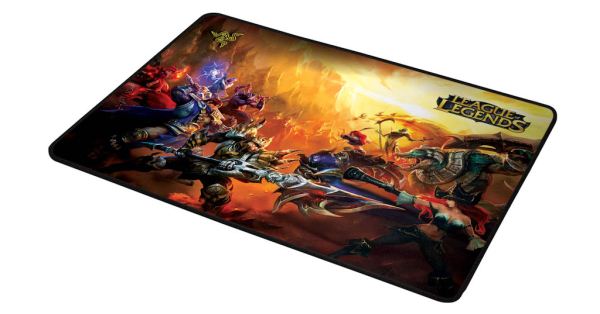
The League of Legends Edition Goliathus Speed is a pretty fancy looking piece of kit. It’s a mousepad with a legitimate sense of visual drama, featuring artwork depicting a scene of various champions battling. It’s attention grabbing, I’m a fan. Other than the artwork, this is exactly the same as the regular Goliathus Speed mousepad. It comes in one size - the standard 355mm by 254mm, and retails for exactly the same $19.99 as the non-LoL Goliathus. If the eye-catching graphics appeal to you, it makes for an interesting alternative to the standard black and green colour scheme of the Goliathus. Both League of Legends branded peripherals come with free Tryndamere codes, though I suspect that most people who would buy one of these would already have said champ. 

More...
-
03-05-13, 08:30 PM #2709
Anandtech: AMD Enlists Ben Heck to Build Rocket Launching Desktop PC
In preparation for its presence at SXSW Interactive, AMD enlisted the help of famed modder Benjamin Heckendorn to build a bunch of unique PCs. Traditionally, AMD would just show a bunch of notebook and PC designs available in the market but this year it wanted something a bit more exciting. None of the designs will be sold or available, they are just intended to build interest in the PC and modding communities.
Ben was instructed to hop on eBay, buy a handful of outrageous things and build computers out of them. Among the projects are an Android controlled MP3 player PC built into a gas pump, a Pimp Hat PC, a PC built into a fighter pilot helmet, and a PC built into a small model of the Mystery Machine from Scooby Doo.
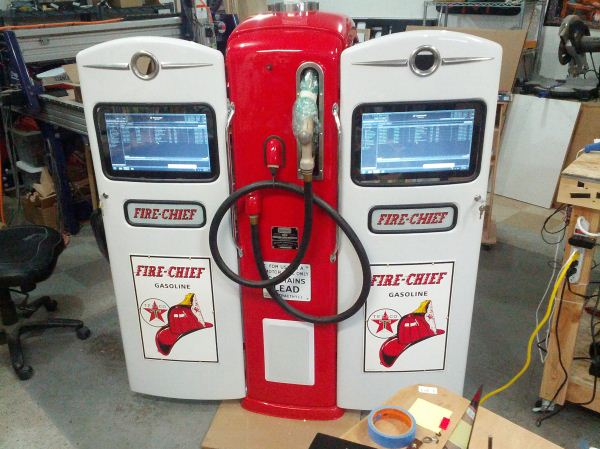
I had the opportunity of playing with one of the PCs that'll be on display at SXSWi this week: a mini-ITX based system capable of launching model rockets. AMD allegedly went to Ben and requested that he "build a computer that could launch rockets". And this is what he came up with.
The system is running Windows 7 and features an AMD A10-5700 on a MSI FM2-A75IA-E53. There's only a single Crucial 128GB m4 SSD inside as well as a small power supply. The mini-ITX internals leave tons of room for the two rocket silos.
The silo hatches are driven by two servos and can be opened independently. Controls on the opposite side of the PC allow you to open the hatches independently, as well as prep the rockets for launch. Select the rocket(s) you want to launch, hit the giant start button and watch the countdown go. It starts at 10 seconds, at 6 seconds the first bay opens up, at 5 seconds the second opens, and then at 0 the two launch with a quarter of a second delay between the two.
All of the switches have a solid, almost industrial, feel to them. The launch electronics all worked flawlessly with no bugs...thankfully.
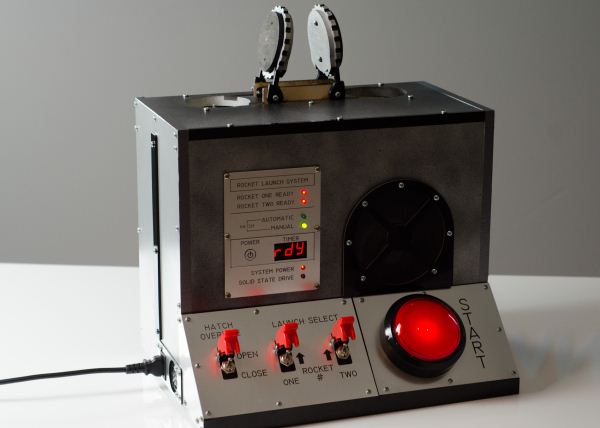
Ben built a custom PCB to drive all of the launch control electronics. The timer as well as the launch control state machine are all driven by Ben's work, rather than by the PC itself. Rockets are ignited by a pair of MOSFETS pulling current from the main PSU's 12V rail. You simply attach alligator clips to the leads of your igniters and you're ready to go. Ben did a good explanation of what it took to build this system on his show a little while ago.
The chassis itself is built from high density PVC foam, with the exception of the base which is aluminum and engraving plastic on the front. The switches were purchased but all of the panels were laser etched by Ben himself. 
The system works as a PC, and although you wouldn't want to launch rockets indoors, it is functional in that capacity as well:
I'll apologize in advance for not having great footage of the rocket post launch. It's been a while since I launched a model rocket and I apparently had forgotten just how fast/high these things go. I needed a far more serious lens to follow the rocket than I had on hand. Needless to say, the system launched rockets just fine.
Admittedly I've never been one for serious case modding, but I do have to say that the end result is pretty impressive. You can argue about the functionality of being able to launch rockets from your PC, but the execution is neat. This was more of a novelty mod but some of the most interesting mods are those that enable new functionality or put PCs into areas/roles never thought possible. Ben's work on getting the Xbox 360 into a laptop is an example of such a thing. Given how powerful (and power efficient) PC hardware is these days, I'd like to see the reverse done - a mod to make a PC better approximate a gaming console. 
If you're going to be in Austin for SXSW this week want to come by and check out the Rocket PC (and others) for yourself head on over here to register for AMD's Technograffiti event. Registration is free, and the event takes place March 7th (this Thursday) at 7:30PM. 
Check out photos of the Rocket PC as well as some of the other Ben Heck mods in the gallery below.
Gallery: AMD Enlists Ben Heck to Build Rocket Launching Desktop PC






More...
-
03-06-13, 04:30 AM #2710
Anandtech: Roku 3 Media Streamer Launches for $99
We have reviewed the Roku devices before, and the last major hardware refresh (if you discount the MHL-equipped streaming stick) was the Roku 2 XS which we evaluated in detail back in September 2011. Engadget spied some FCC filings early last month, and to no one's surprise, the Roku 3 was officially launched yesterday at the $99 price point.
We could write multiple paragraphs about the new features touted by Roku in the new hardware, but felt it would be simpler to present the plus and minus points of the Roku 3 in a point-wise fashion:
Positives:
- Faster CPU for a better user experience. Users are no longer bundled with the same SoC that is part of the Raspberry Pi. We are still looking into details of the new SoC, and have good reason to believe that it is Broadcom's.
- Dual-band Wi-Fi support, enabling consumers to use the relatively interference-free 5 GHz band for wireless streaming
- Miracast-capable internal hardware
- Updated user interface to go with the increased number of channels
- Innovative headphone jack in the remote to enable users to enjoy Roku channels without disturbing others in the room
- Smaller physical dimensions compared to Roku 2
Areas to Improve:
- Miracast support will only be available later this year
- No official YouTube channel yet
- Very basic local media streaming support
- Pushes hard for credit card information to be on file before allowing usage of device
Roku was one of the first companies to come out with a streaming set top box for the general consumer and it has managed to move a large number of devices over the last few years, thanks to its pioneer status and marketing budget. However, the truth is that devices like the WDTV Live and WDTV Play from Western Digital provide all the major streaming channels and also integrate very good local media support at a similar / lower price point compared to the Roku boxes. At the lower end, I have also seen Netgear's streaming devices such as the NTV200 and the NeoTV Max 300 SL provide a large number of streaming channels. The latter also integrates a useful differentiating feature in the form of Wi-Di support. 
The Roku 3 refresh is interesting, but seems to lack any particularly exciting feature. What do readers think? Feel free to sound off in the comments.

More...
Thread Information
Users Browsing this Thread
There are currently 9 users browsing this thread. (0 members and 9 guests)




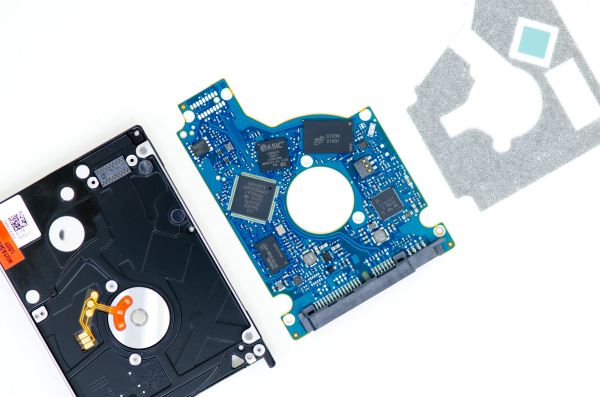



 Quote
Quote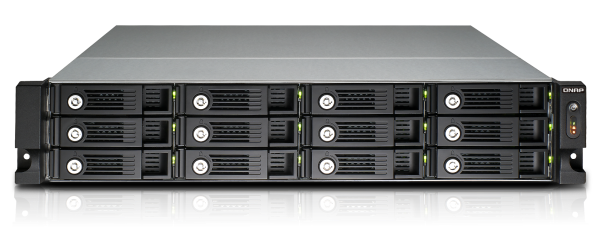

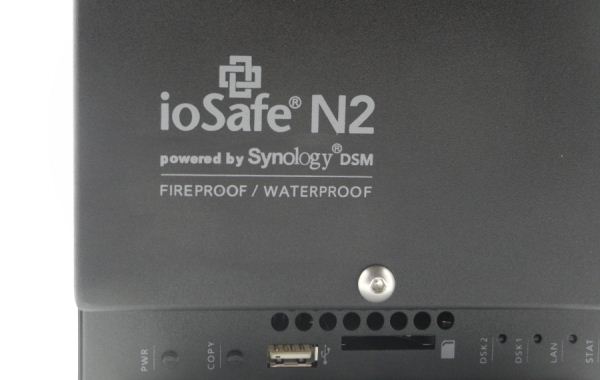




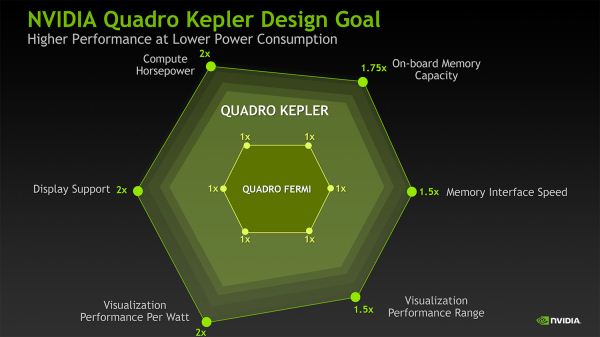
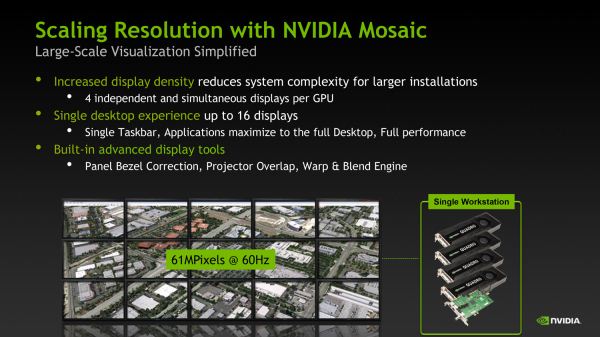
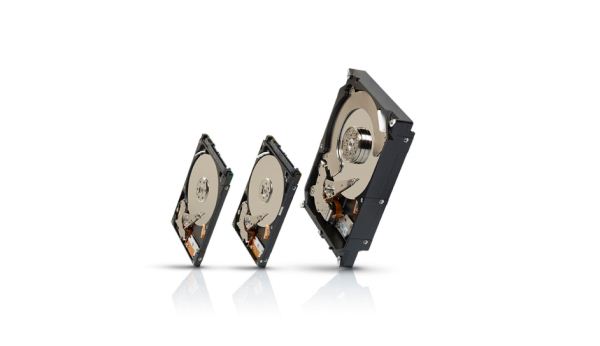
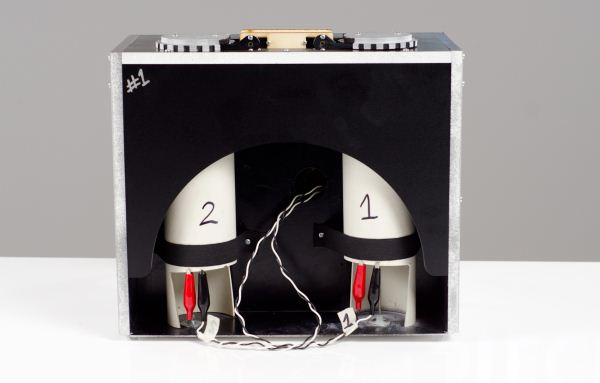

















Bookmarks